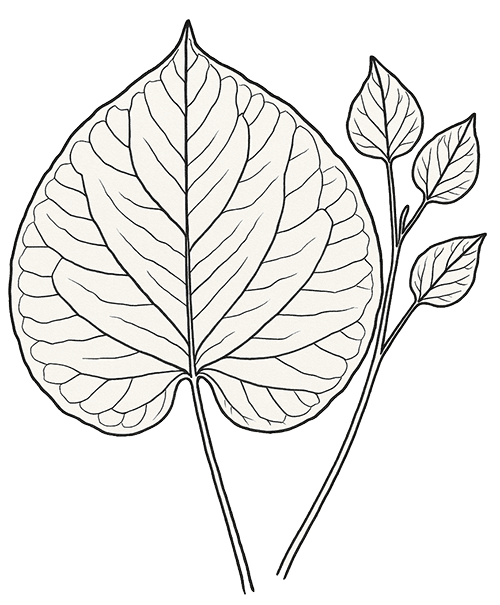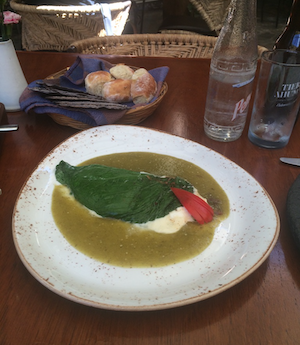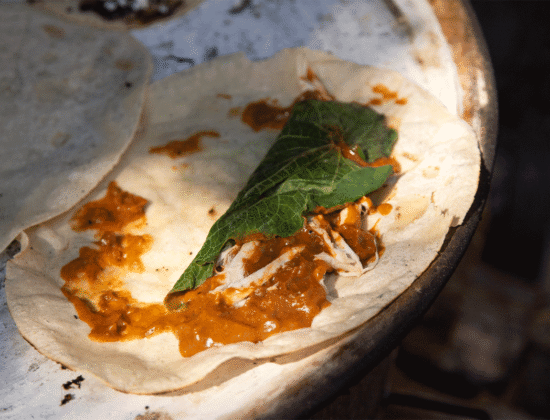If you’ve ever had a dish in southern Mexico with a flavor that seemed earthy, peppery, and a little like root beer all at once, you may have tasted hoja santa. This unique herb has been used in Mexican cooking for centuries and plays an important role in both traditional recipes and local culture. The name means “sacred leaf” in Spanish, and for many cooks, that title fits.
What is Hoja Santa?

Hoja santa is a large, heart-shaped leaf that grows on a perennial plant native to Mexico and Central America. It’s also known by a few other names, like Mexican pepperleaf, acuyo, or yerba santa. The plant can grow quite tall and thrives in warm, humid climates.
The leaves can be as big as a dinner plate, and when you rub one between your fingers, you’ll notice a strong aroma. People describe the smell and flavor as a mix of sassafras, anise, black pepper, and even eucalyptus.
How is it Used in Cooking?
In traditional Mexican kitchens, hoja santa is used in several creative ways:

- Wrapping and steaming: Much like banana leaves or corn husks, hoja santa can be used to wrap tamales, fish, or cheese before steaming or grilling. This helps infuse the food with its unique flavor.
- Flavoring stews and sauces: The leaves are often chopped or torn and added to rich dishes like mole verde or pipián. In Oaxaca and Veracruz, it’s common in slow-cooked recipes with pork or chicken.
- Fresh in quesadillas: Some cooks place a whole hoja santa leaf inside a corn tortilla with cheese and grill it to make a herbal quesadilla with a little extra punch.
- Herbal drinks: It’s also been used in traditional herbal teas and remedies.
While it’s not as common in northern Mexican food or Tex-Mex dishes, hoja santa has a growing fan base among chefs who enjoy experimenting with bold and aromatic flavors.
A Leaf with Deep Roots
Hoja santa has been part of Indigenous food and medicine long before the arrival of the Spanish. The Nahua people and others in Mesoamerica used it for its culinary value and also believed it had healing properties. It was traditionally used to soothe stomachaches, reduce inflammation, and even help with breathing issues.
In pre-Hispanic times, hoja santa was often paired with cacao in sacred drinks. Over time, it found a home in cooking as a flavorful tool to balance and enhance regional ingredients.
Today, it’s especially common in the cuisines of Oaxaca, Tabasco, Chiapas, and Veracruz. In these areas, markets often sell fresh hoja santa by the bundle.
Is Hoja Santa Safe to Eat?
There is one small note of caution. Hoja santa contains a natural compound called safrole. It’s the same compound found in sassafras, and in large amounts, it has raised some health questions. But in the small amounts typically used in cooking, it is widely considered safe. It’s always best to enjoy it as part of a balanced diet and not overdo it.
Growing and Storing Hoja Santa
If you live in a warm climate, you can grow hoja santa in your garden. It does well in partial shade and needs lots of water. Because the leaves are big and soft, they don’t store for long once picked.
In the kitchen, hoja santa is best used fresh, but you can also find it dried in some specialty shops or Latin American grocery stores. Dried hoja santa has a milder flavor, so you may need to use a bit more.
A Final Taste
Hoja santa may not be as well-known as cilantro or oregano, but it brings something truly special to the table. Whether you try it in a mole, a quesadilla, or a tamale, the experience is both flavorful and cultural.
If you’re looking to explore more regional ingredients or give your dishes a surprising twist, hoja santa is a great place to start.

